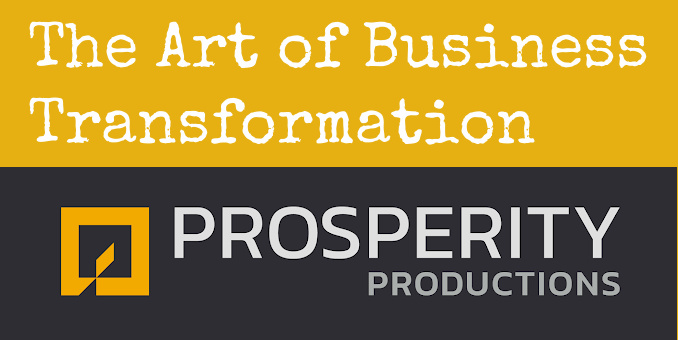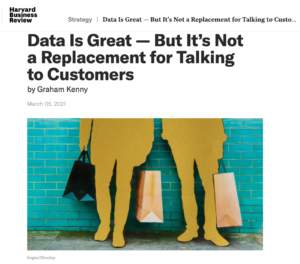What do Oliver Sacks, The Hubble Telescope and Qualitative Research have in common?

 They are all integral parts to understanding the world through direct OBSERVATION, yet, they have been dismissed at times by those who favor merely quantitative information.
They are all integral parts to understanding the world through direct OBSERVATION, yet, they have been dismissed at times by those who favor merely quantitative information.
- When Oliver Sacks first started writing case studies NO ONE in the academic or scientific community would even touch his work. At the time, the world of neuroscience was totally tilted toward mapping data to show the impact of medications vs. understanding the individual life and needs of patients.
- The Hubble Telescope does not have a theory, it just observes and captures data. YET, at times, when this data contracts current theories, some astronomers and even physicists ignore it.
- Qualitative Research is ignored or derided by some marketing and communications professionals because it’s too squishy or emotional. Instead, there’s a thundering herd following AI and data analytics and favoring tangible data vs. qualitative insights.
People, we don’t have to choose.
- Qualitative work gives us observations and insights often told through the stories, point of view and journey of our customers – it gives us answers to “why do you do this?” “what were you thinking?” and “how does that feel?”
- Quantitative data gives us patterns of behavior and prioritizes what is a big deal vs. not a big deal – it gives us the “what?” and “how many?” and “how often?” It can prioritize product features, gives us audience sizes and also predict sales.
Continued from the newsletter…
The answer: We Need both.
We need Oliver Sacks to uncover opportunities that data didn’t see, and then we need data to put together larger patterns to tap into that opportunity. We need the Hubble Telescope to find things we can’t see on our own, and we need theoretical physicists and astronomers to re-jigger current theories to account for those things. As marketers and strategists, we need both the inside world of the customer and the statistical patterns to decide not only what to do but where the priorities lie.
The value of deep customer insights and how to get them
(Discovery or exploratory research)
Have you ever been to Disneyland or another theme park? Think about the experience you had. On paper, one could say you went on a few rides, had a snack and enjoyed a stroll around the park. But in real life, what did you experience? Were the kids fighting? Was it hot? Was the wait short or long? Did someone go the extra mile to make you feel welcome? Or the opposite?
You’ve just seen the difference between data and real life. Quantitative insights give us the big picture – how many, how often, what happened. Qualitative insights give us the details – the opportunities and obstacles we encounter in our experience with brands.
Another way to look at this is online. Did you know that when you get “stuck” on a webpage, your body reacts as if you are physically trapped? My tense shoulders and back are a testament to some frustrating websites I’ve visited recently, what about yours?
So how do we get real, meaningful and deep insights about our external audiences when you are doing discovery or exploratory work? (Meaning: work designed to better understand your target audience, key themes or motivators and how your product/service impacts their world).
Keeping an open mind while testing your theories
There’s no such thing as research in a vacuum. Every time we set out to do research, we have SOME idea of where the answers might be. All of that is well as good, provided that we aren’t tipping the scales in one direction or another, and provided that we leave room to be surprised.
In the 20+ years I’ve been doing exploratory research, I have been surprised by insights, either a brand new way of seeing the world through the customer’s eyes OR a very different take on why they do (or don’t do) what they do. It’s thrilling to have a lightbulb go off in this way because it means a new level of opportunity for the client.
Insights are the fuel of innovation, business growth and expanded customer loyalty. If you don’t get TRUE insights, you are just working off the playbook of everyone else in your industry.
 Dig deep! Ask all the questions! Be the expert on your audience in a way no one else can!
Dig deep! Ask all the questions! Be the expert on your audience in a way no one else can!
Qualitative research:
When you are doing exploratory or discovery research, the goal is to understand the customer’s world, their journey with you and what they want/need.
Here are some key questions to ask:
- What makes you feel successful? (if you are doing B2B, ask this vis a vis work).
- What makes you not feel successful?
- Tell me a positive story about (the world of your category). When did a product or service do a GREAT job that made your life better or easier?
- Tell me a negative story about (the world of your category). When did a product or service do a TERRIBLE job that made your life better or easier?
- Walk me through how you make decisions about this company/product? (if a B2B or pharma product, be sure to ask about the other players that influence the decision).
- If you have a product, what is the job of this product in your life? What other products could do that same job?
- What do you wish the people making this product or service knew or understood about you?
- Test your theories:
- Our group is thinking about some ideas that our company/product could offer to you. Let me share these ideas with you and see if they resonate with you.
- What is the company trying to say? How do you feel about that idea?
- How do you feel about the way they are talking to you? Tell me why.
- What else do you wish the company understood about you?
- If they have worked with the company/product, what were your experiences? (Positive, negative). How does this experience match or not with what the company is saying?
- Of all the ideas we’ve talked about today, which one is most appealing to you and why? (When you go over the ideas you’ve discussed, be sure to include ideas you’ve heard from this respondent and others you’ve talked to.)
Quantitative research:
When you are doing exploratory or discovery research, the goal is to gain insights on patterns of behavior, predictions for the future, and priorities on where to invest for maximum results.
- What are the key audience segments we need to cover? (Be sure to have enough sample size to make statistical conclusions).
- What do we think are the key variables that separate segments into groups? Be as creative and thoughtful as you can here. Often, it’s great to do your qualitative work ahead of time so that you can base those on what you hear in that research.
- What patterns of behavior can we measure and take action on?
- Aided vs. unaided awareness
- Brand preferences (our brand vs. others)
- Key attributes that make a good/preferred brand in this category
- Key drivers of purchase (what are they looking for?)
- Unmet needs (problems they have or things they would like to see)
- Look for differences by:
- Attitude – Budget minded, value minded, core things they care about or look for when making a purchase or considering a company. These are often the richest insights you’ll see in your study.
- Age
- Income
- Race
- Purchase behavior (i.e. which audiences buy the MOST of your product? what are the key characteristics of these audiences?)
- Anything else that is a key factor for your business
- Length of time with an illness/severity (if pharma)
- How often they try new products (consumers)
- Where they get new ideas
- Which media they use to get information
Mini-Case Studies
Mini Case study – Crunch ‘n Munch
 ConAgra discovered that the people who bought their product the most purchased multiple boxes a month. Qualitative research among this group revealed that they had such a strong personal relationship with the brand that they bought individual boxes for everyone in the family so they wouldn’t have to share “my box.”
ConAgra discovered that the people who bought their product the most purchased multiple boxes a month. Qualitative research among this group revealed that they had such a strong personal relationship with the brand that they bought individual boxes for everyone in the family so they wouldn’t have to share “my box.”
Mini case study – CFOs and social media
Qualitative research showed four major orientations to social media among CFOs of major corporations:
(A) social media is a tool for the future
(B) social media is a “toy” that might be a tool someday
(C) social media a “toy” that poses a major security risk
(D) social media is “a waste of time and should be ignored.
Quantitative research showed us the size of each audience and added details about their age and stage in their career.
Mini Case Study: Pet food
Quantitative research focused on new pet owners and gathered information about their experience. BUT, qualitative research showed a flaw in the thinking. People who have recently adopted a new pet are not necessarily new pet owners (many have had pets in the past). Instead, the segmentation in pet ownership has more to do with their level of knowledge vs. how recently they adopted a pet.
Mini Case Study: Diabetes medication
Quantitative work showed a gap in diabetes medication compliance among lower-income respondents. The theory was that process happened either because patients were less concerned about their health OR that these individuals had less time with a health care provider. Qualitative research showed that in a medical office the group story is that the physician gives the patient advice. However, when we talked to the individual members of the office (MD, RN, nurse’s assistant, office manager), it turns out that many people were more honest and had more time with nurses, nursing assistants and even office managers. When patients talk to health care providers, they are often cold and dressed in a paper-thin gown. Then they come out to the office manager wearing their street clothes and don’t remember what they were told in the patient room. The solution was to better inform every member of the team so that everyone could help the patient understand and comply with their treatment.
Dive Deeper: Additional Resources
Case studies or articles that show that having data AND daily life made a difference in a company’s understanding of its customers

Harvard Business Review 3/5/2021
Data Is Great — But It’s Not a Replacement for Talking to Customers
By: Graham Kenny, CEO of Strategic Factors, is a recognized expert in strategy and performance
Summary: Many companies rely too much on big data and analytics in their hunt for strategic insights. They’d do better if they actually went out and talked to their customers instead, as Toyota and Adobe do, because data is too rooted in what managers already think their customers are interested in.
Real insights come from seeing the world through someone else’s eyes. You will only ever get that by truly engaging with customers and listening to their stories.” ~ Graham Kenny
Airbnb Resource Center 3/5/2020
Lessons from interviewing 300 Airbnb hosts
An author shares how any business can learn from Airbnb’s key principles.
In his book “The Airbnb Way,” author Joseph Michelli interviewed hundreds of hosts and guests in 11 countries.
- As a result, he believes any business can learn from five key principles.
- These principles include belonging, trust, hospitality, empowerment, and community.
By diving deeply into the life of our customers, we can follow their journey with our products and services. This process will uncover opportunities to better serve them and set a clear pathway for the future” ~ Lori Hamilton
Inc 5/3/2013
Airbnb Founder: Best Way to Get Inside Your Customers’ Heads
Airbnb co-founder and CPO Joe Gebbia says his company uses one tactic to really understand the customer experience.
He continued:
So how do we bridge from our script to these real world experiences? We storyboard. And we storyboard like crazy. Last year we embarked on an ambitious project to map the entire guest and host terrain of Airbnb and we did it through illustration. We looked at key emotional moments of the journey and we drew them. We visualized them. And what it’s done for us, it’s allowed our entire company to achieve a whole new level of empathy with our customers.”
Entrepreneur 2014
Know Your Customers by Living a Day in Their Lives by Steve Blank
One of the most powerful ways to understand your customers, whether they’re consumers or business customers, is to discover how they “work” and write it down, delineating a day in their life.
Inc 5/3/2019
Use Big Data–and Small Data–to Understand Your Customers
Know the difference between big and small data? Using each could transform your business.
Journal of Business Strategy
Daily life, not markets: customer-centered design.
See: https://www.id.iit.edu/wp-content/uploads/2015/03/Daily-life-not-markets_JBS_071.pdf
Harvard Busines Report Jan/Feb 1994
Spend a Day in the Life of Your Customers.
Thanks for reading!

